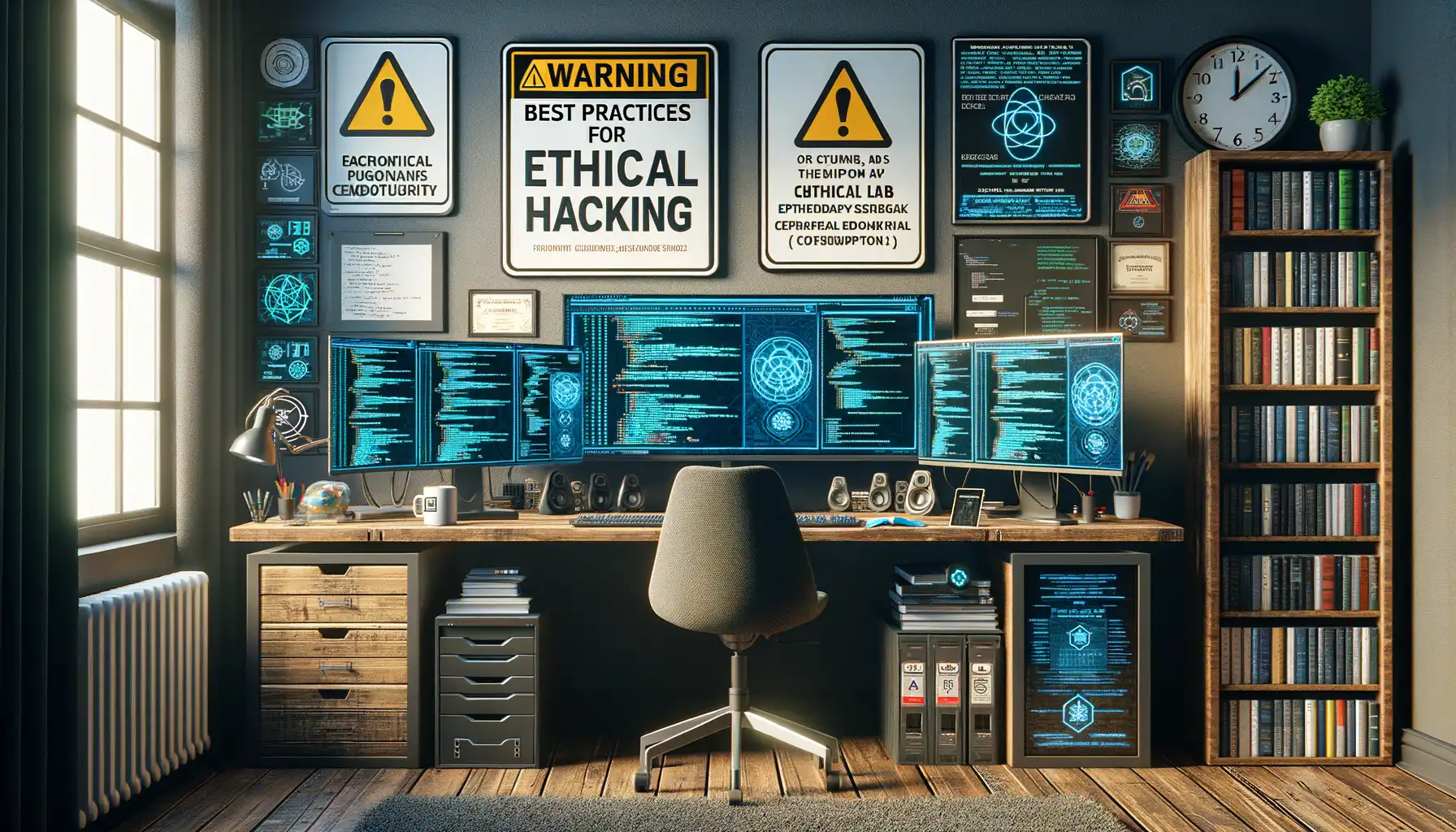Understanding the Importance of a Home Lab
Why a Home Lab is Your Cyber Playground
Imagine a place where you can break things without consequences, push buttons you didn’t even know existed, and uncover the digital mysteries of the world—all from the comfort of your own home. That’s the magic of a home lab. It’s not just a setup; it’s your personal cybersecurity dojo, where every mistake is a lesson and every breakthrough feels like cracking a hidden safe.
Without a home lab, experimenting with ethical hacking can feel like trying to learn to swim by watching videos—safe, sure, but wildly ineffective. A home lab isn’t just equipment; it’s freedom. Freedom to test scripts, explore systems, and hone your craft in a controlled environment that acts as both playground and proving ground. Think of it as the difference between scribbling on a notebook and painting a masterpiece on an infinite canvas. Intrigued yet?
- Dreaming of mastering penetration testing? This is where you start.
- Curious about malware analysis? Safely dissect it here.
- Want to simulate cyberattacks? Your lab becomes your battlefield.
So, why wait? You don’t need corporate gear or fancy budgets—just a spark of curiosity and your DIY spirit.
Essential Tools and Software for Your Lab

Must-Have Tools to Supercharge Your Lab
You’re not just building a home lab; you’re crafting your personal command center for ethical hacking. To make it amazing, you’ll need some essential tools and software—think of them as the screwdrivers and circuit testers in your digital toolbox. Here’s where it gets exciting: the right mix of tech can transform your experiments from “meh” to mind-blowing.
Start with a solid operating system. Kali Linux, anyone? It’s practically built for ethical hackers, preloaded with hundreds of penetration testing tools. Prefer a bit more flexibility? Try Ubuntu or other Linux distros, then layer on what you need. Begin with basics like Wireshark for packet analysis or Burp Suite for testing web app vulnerabilities.
Here’s a quick shopping list for your lab setup:
- VirtualBox or VMware: For creating isolated environments to safely test exploits.
- Nmap: The network scanner you won’t want to live without.
- Metasploit Framework: Your ultimate exploitation suite.
Tip: Download cheat sheets for these tools. Seriously, they’re lifesavers when you’re knee-deep in configurations!
Powering Up with Automation and Scripts
Automation is the secret sauce that turns good labs into great ones. Get cozy with tools like Python—your all-in-one scripting solution for everything from reconnaissance to creating custom exploits. Even if you’re new to coding, think of Python as the library where all the cool kids hang out.
For web-based testing, explore OWASP ZAP. It’s user-friendly, but don’t let that fool you—it’s powerful enough for pro-level tasks too. And don’t skip over John the Ripper, your go-to password cracker.
Bottom line: stocking your lab is like stocking your fridge. Get the essentials first, and then sprinkle in the good stuff to keep things spicy!
Step-by-Step Guide to Setting Up Your Home Lab

Start with the Basics: Hardware and Space
Think of your home lab as your personal cybersecurity playground—or maybe a secret tech lair. The first step? Find a dedicated space, even if it’s just a corner of your room or an old desk begging for a purpose. Next, gather your hardware tools. An old laptop or desktop can work wonders here. Don’t have one? Hunt down a refurbished gem online or check local buy-and-sell groups.
Your lab doesn’t need to look like Tony Stark’s basement. It’s not about flash—it’s about function. At a minimum, aim for a machine with at least 8GB of RAM, but 16GB will let you comfortably run virtual machines (VMs). Bonus points if you have an external monitor—you’ll thank yourself when juggling multiple screens like a pro hacker.
Setting Up Virtual Environments and Networking
Now comes the fun part—building your digital battleground! Start by installing virtualization software like VirtualBox or VMware. These tools let you create “mini computers” (VMs) on a single machine. Imagine it as having different worlds living inside your PC—each ready for a unique experiment.
Next, configure your network. Go for a NAT network setup, isolating your VMs while keeping them connected. Picture it this way: you’re creating a safe sandbox where nothing sneaky can break out into your main system.
- Install a Linux distribution like Kali Linux—it’s a hacker’s Swiss Army knife.
- Add a vulnerable VM like Metasploitable 2 for practice. It’s designed to be broken into (legally!).
- Set up a logging tool like Splunk or ELK Stack to analyze traffic and collect insights.
Time to roll up your sleeves—you’re officially building your cyber kingdom!
Best Practices for Ethical Hacking in Your Home Lab

Start with Respect for Boundaries
Ethical hacking is like being a lockpicker with permission. Sure, you’ve got the skills to open many doors, but the golden rule is to only tinker with what you’re explicitly allowed to. Think of your home lab as your playground—it’s where you can safely push boundaries without stepping on anyone else’s toes. Never test exploits or techniques on external systems, even if it’s “just for fun.” It’s not just unethical—it’s illegal.
For example, if you’re testing network vulnerabilities, stick to simulations within your lab. Tools like Metasploitable and DVWA are designed to be hacked. They’re like punching bags for hackers—use them to sharpen your techniques without causing harm.
Document Everything Like a Detective
Think of your hacking experiments as a story you’re writing. Document every step—what tools you used, what worked, what didn’t, and any new discoveries. This habit isn’t just for show; it builds your skills. Plus, when troubleshooting goes sideways (and trust me, it will), detailed notes are your lifeline.
- Keep a hacker diary: jot down commands, configurations, and results.
- Use tools like KeePass or encrypted folders to store sensitive info, like passwords and private keys.
- Create reliable backups of your lab setup—no one wants to restart from scratch after a crash.
Your home lab is your ethical hacking dojo—respect it, document your growth, and stay curious.
Advanced Tips and Resources for Expanding Your Lab

Customizing Your Lab Setup for Next-Level Experiments
Ready to take your home lab from beginner-friendly to brain-meltingly advanced? Expanding your lab is like upgrading a toolkit—each new addition opens doors to experiments you didn’t even know were possible. First, consider enhancing your virtual environment. Tools like Proxmox VE or ESXi can help you juggle multiple operating systems like a pro. Picture running Windows, Linux, and macOS all in one place—seamless, smooth, and oh-so-satisfying.
Looking for adrenaline-pumping challenges? Create your own cyber battlefield with vulnerable machines. Platforms such as VulnHub or Hack The Box provide downloadable VMs designed explicitly for ethical hacking practice. Think of it as your own mini Capture the Flag arena, without leaving your home.
- Set up a dedicated subnet to simulate real-world networks.
- Experiment with tools like Burp Suite and Snort for comprehensive web app and network monitoring.
- Dive into containerization with Docker—imagine your lab evolving into a bustling tech metropolis!
Stay Ahead: Must-Have Resources and Communities
Sometimes, the best tips come from people who’ve walked the same path. Join forums like Reddit’s r/netsec or communities on Discord where cybersecurity aficionados share advice, tools, and troubleshooting hacks. Follow blogs like Offensive Security or Cybrary’s Insider Pro to stay sharp and informed.
Lastly, don’t underestimate the power of gamified learning. Platforms like TryHackMe deliver interactive lessons, guiding you step-by-step through complex concepts while you practice in real time. Expanding your lab is a journey, and these resources are there to make every step exciting, challenging, and downright electrifying!












